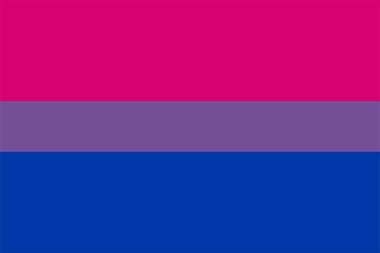Acceptance of same-sex activity soars, led by bisexuals

By Rob Howard
Associate Editor
The question has been around for a long time – what percentage of the population is lesbian, gay, bisexual and transgender? And there have been a number of different percentages tossed about over the years. Acceptance of same-sex activity was very low in the 40s, but has risen through the years, a recent study reports.
The 1948 study published by Alfred Kinsey (usually called the Kinsey Report) is popularly thought to have said that 10 percent of males are homosexual. In fact, Kinsey came up with 13 different measures. He concluded that eight percent of white males are exclusively homosexual for at least three years between the ages of 16 and 55, and four percent of white males are exclusively homosexual throughout their lives, after the onset of adolescence. The findings for females, published in 1953 are slightly lower.
According to William DuBay, writing in queerbychoice.com, “Kinsey drew our attention to the common practice of labelling ‘heterosexual’ only those who are exclusively homosexual, but labelling ‘homosexual’ anyone who has had even minimal homosexual experience. ‘The persons who are identified as 'homosexuals' in much of the legal and social practice,’ he wrote, ‘have rated anything between one and six on the above scale."
So it is interesting to note a current study, by the NORC at the University of Chicago, found that the acceptance of same-sex activities has soared over the last 40 years. Towleroad.com wrote about the study, “A team of social scientists from three different American universities analyzed the prevalence of men who have sex with men and women who have sex with women, as well as the acceptance of such behavior nationally, from 1972 to 2014. The change they noticed was dramatic: the percentage of adults who believed that same-sex activity was ‘not wrong at all’ went from 11 percent in 1973, to 13 percent in 1990. By 2014, that number had jumped to 49 percent.
“According to the study, called Changes in American Adults’ Reported Same-Sex Sexual Experiences and Attitudes, 1973–2014 and published Wednesday in the journal Archives of Sexual Behavior, ‘the number of U.S. adults who had at least one same-sex partner since age 18 doubled between the early 1990s and early 2010s (from 3.6 to 8.7 percent for women and from 4.5 to 8.2 percent for men). Bisexual behavior (having sex with both male and female partners) increased from 3.1 to 7.7 percent, accounting for much of the rise, with little consistent change in those having sex exclusively with same-sex partners.’”
The Washington Post reported a co-author of the study as saying, “That increase in tolerance likely helped drive an increase in sexual behaviors (and willingness to report them). The percentage of men who have had sex with at least one man increased from 4.5 percent to 8.2 percent between 1990 and 2014. Women reporting at least one female sexual partner increased from 3.6 percent to 8.7 percent of the population during the same period.
“But Twenge and her colleagues say that bisexual behavior drove this change: The percentage of survey respondents who had all same-sex partners didn’t increase significantly during that time, but the percentage of adults with both male and female partners increased from 3.1 percent to 7.7 percent.”
So, while the number of (for instance) gay men remains at Kinsey’s four to eight percent, the number of people having sex with both genders has significantly increased. The percentage of bisexuals in the LGBT community is popularly considered to be about 50 percent.
Copyright 2016 The Gayly – June 2, 2016 @ 2:30 p.m.





